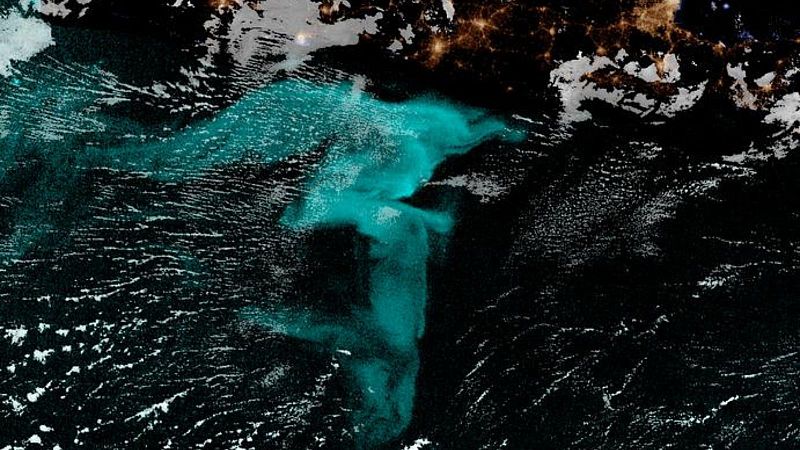
“The whole appearance of the ocean was like a plane covered with snow. There was scarce a cloud in the heavens, yet the sky appeared as black as if a storm was raging.” These are the words written by a sailor in 1854, after encountering the rare phenomenon seafarers called ‘milky seas’.
These glowing ocean events have baffled humans for centuries. The “awful grandeur” the nineteenth-century sailor described - which made him think the end was nigh - we now know to be a form of bioluminescence: light emitted by living organisms during chemical reactions in their bodies.
But this oceanic bioluminescence is still shrouded in mystery. To try and understand this phenomenon, researchers in the US have created a database combining 400 years of sailors’ eyewitness accounts with modern satellite data.
The team at Colorado State University (CSU) and the Cooperative Institute for Research in the Atmosphere say this will help research vessels anticipate when and where a milky sea will occur, enabling them to collect samples.
“Milky seas are incredible expressions of our biosphere whose significance in nature we have not yet fully determined,” says Professor Steven Miller, co-author of a new study about the database. “Their very existence points to unexplored connections between the surface and the sky, and between microscopic to the global scale roles of bacteria in the Earth system.
“With the help of this new database, forged from sea-faring ships of the 17th century all the way to spaceships of modern times, we begin to build a bridge from folklore to scientific understanding.”
What causes milky seas?
From snow white to “a brilliant and bright green”, ghostly grey to turquoise, milky seas have been observed in various shades over the years. They cover a wide distance - sometimes over 100,000 square kilometres - and can last for weeks on end.
This steady glow differentiates them from other, more common kinds of bioluminescence in water, like the flashing of plankton. They are so vast and bright that they can sometimes be seen from space.
Milky seas are believed to be caused by bacterial activity - most likely from a luminous microscopic bacteria called Vibrio harveyi. This specific strain was found living on the surface of algae within a bloom by a research vessel that managed to take a sample in 1985.
But as the milky displays occur only rarely, and typically in remote regions of the Indian Ocean, scientists have struggled to get the biological information to confirm this.
“It is really hard to study something if you have no data about it,” says Justin Hudson, a PhD student in CSU’s Department of Atmospheric Science and the paper’s first author.
“There is only one known photograph at sea level that came from a chance encounter by a yacht in 2019,’ he adds, “so, there is a lot left to learn about how and why this happens and what the impacts are to those areas that experience this.”
How are milky seas connected to climate events?
The new database shows that sightings usually happen around the Arabian Sea and Southeast Asian waters. It also reveals that they are statistically related to the Indian Ocean Dipole and the El Niño Southern Oscillation when sea surface temperatures vary.
Since both these climate phenomena can impact global weather, the researchers are curious to know exactly how milky seas are linked to these patterns.
“The regions where this happens the most are around the northwest Indian Ocean near Somalia and Socotra, Yemen, with nearly 60 per cent of all known events occurring there. At the same time, we know the Indian monsoon’s phases drive biological activity in the region through changes in wind patterns and currents,” says Hudson.
“It seems possible that milky seas represent an understudied aspect of the large-scale movement of carbon and nutrients through the Earth system. That seems particularly likely as we learn more and more about bacteria playing a key role in the global carbon cycle both on land and in the ocean.”
He notes that the regions where milky seas occur feature a lot of biological diversity and are important economically to fishing operations - so there are significant local implications too.
“We have no idea what milky seas mean for the ecosystems they are found in,” adds Miller.
“They could be an indication of a healthy ecosystem or distressed one - the bacteria we suspect are behind it are a known pest that can negatively impact fish and crustaceans,” he says.
“Having this data ready allows us to begin answering questions about milky seas beyond hoping and praying a ship runs into one accidentally.”







